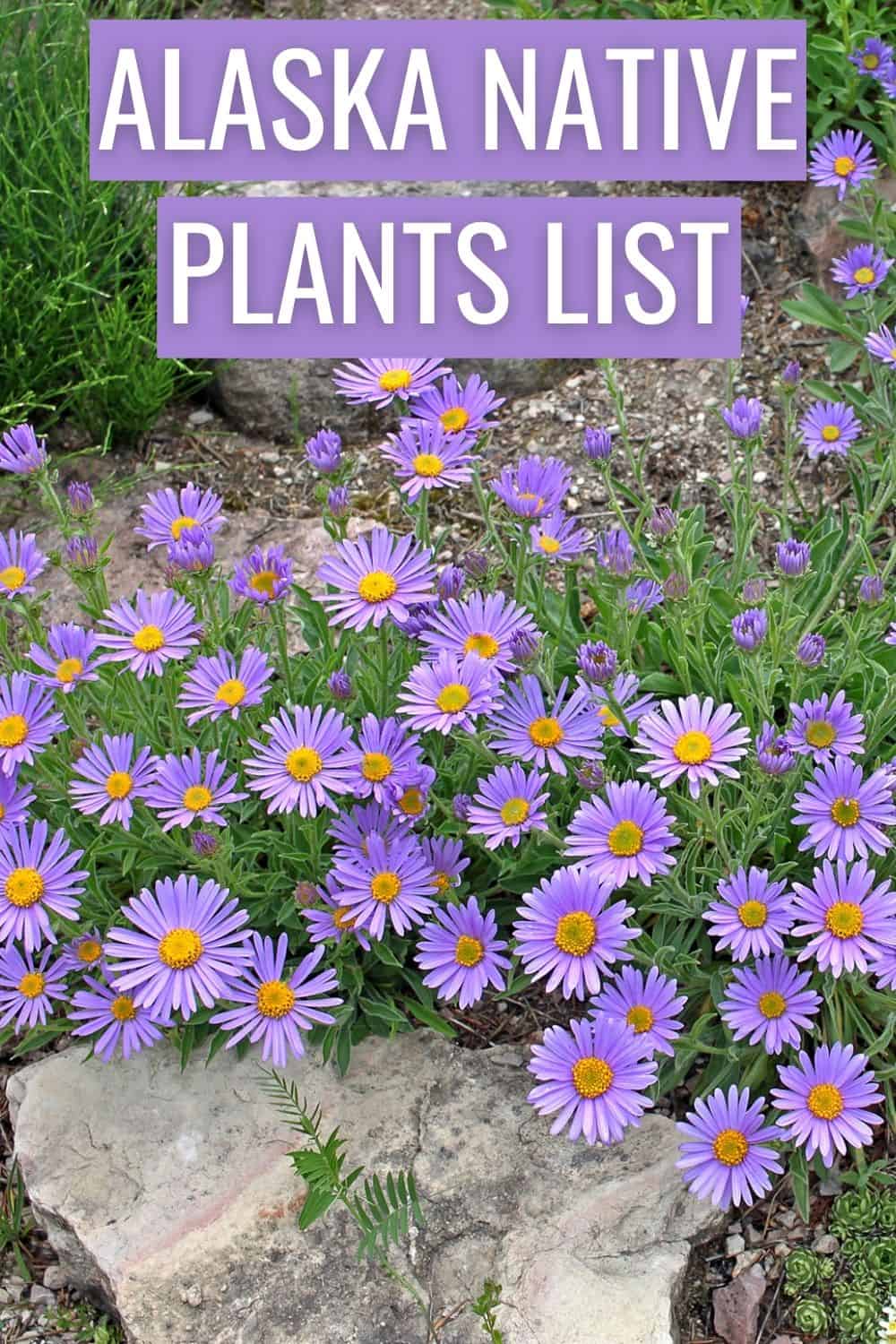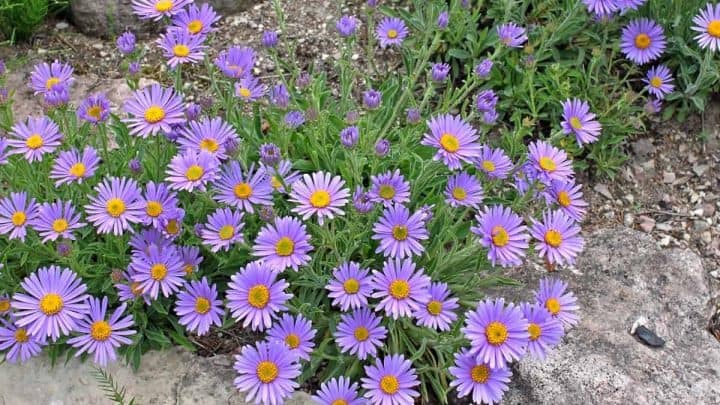Alaska is known as the last frontier. This enormous state is home to intensely cold temperatures as well as fascinating animal life and plant life. In most areas of the state, the Alaska native plants list includes plants that are highly tolerant of the cold.
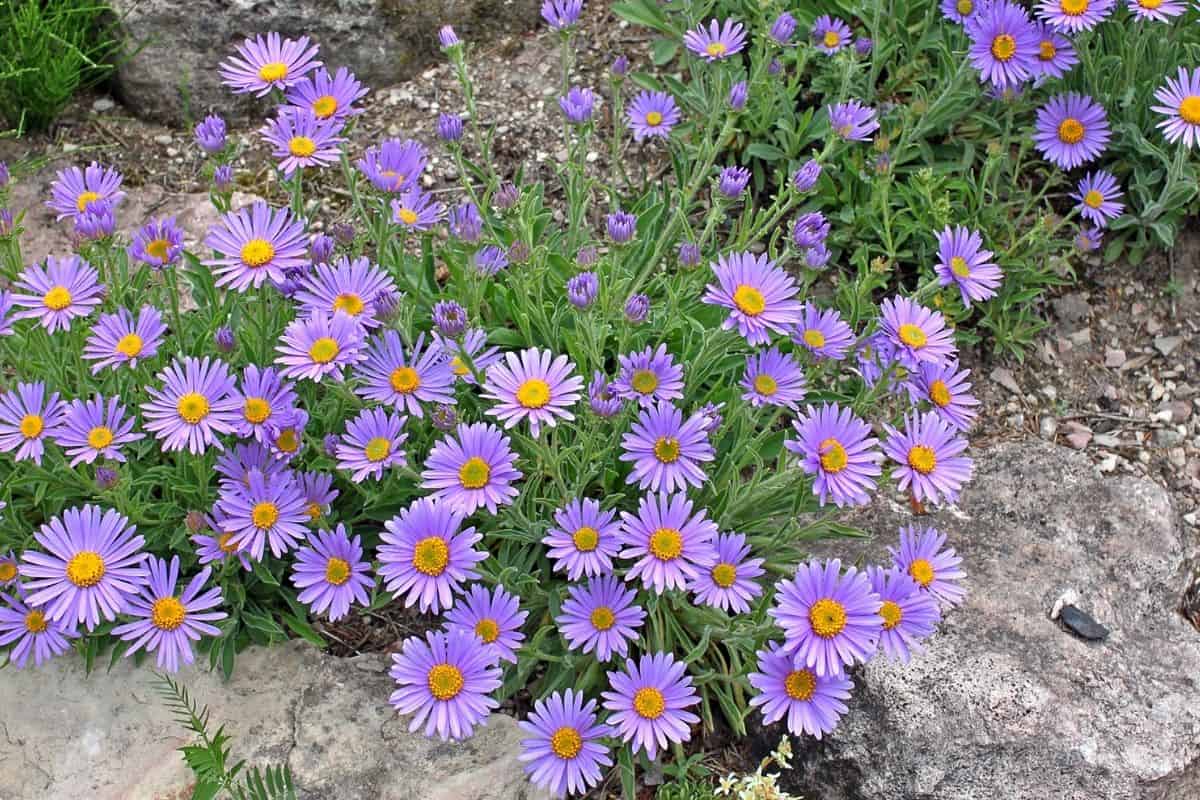
Alaska Native Plants List
The climate isn’t the only thing that’s different about Alaska. It also has extra-long days in the summer, allowing plants to photosynthesize longer each day. This causes the plants to grow rapidly. The native plants tend to be short and are often the dwarf form of a plant that is found elsewhere.
1. White yarrow (Achillea millefolium)
White yarrow is a hardy Alaskan plant that grows many white-and-yellow flowers. It will grow in clumps, and one of its tall stems will hold 20 or more tiny flowers in clumps that average about 5″ across and up to 3′ tall and a width of up to 2′.
The lacy foliage gives this plant even more visual interest. It is tolerant of many circumstances, including drought, high humidity, heat, rabbits, and deer.
Plant it in full sun and in soil that has average moisture and that drains well. Dry soil won’t affect it, but if the soil is overly moist, the plant can have problems.
2. Small-flowered anemone (Anemone parviflora)
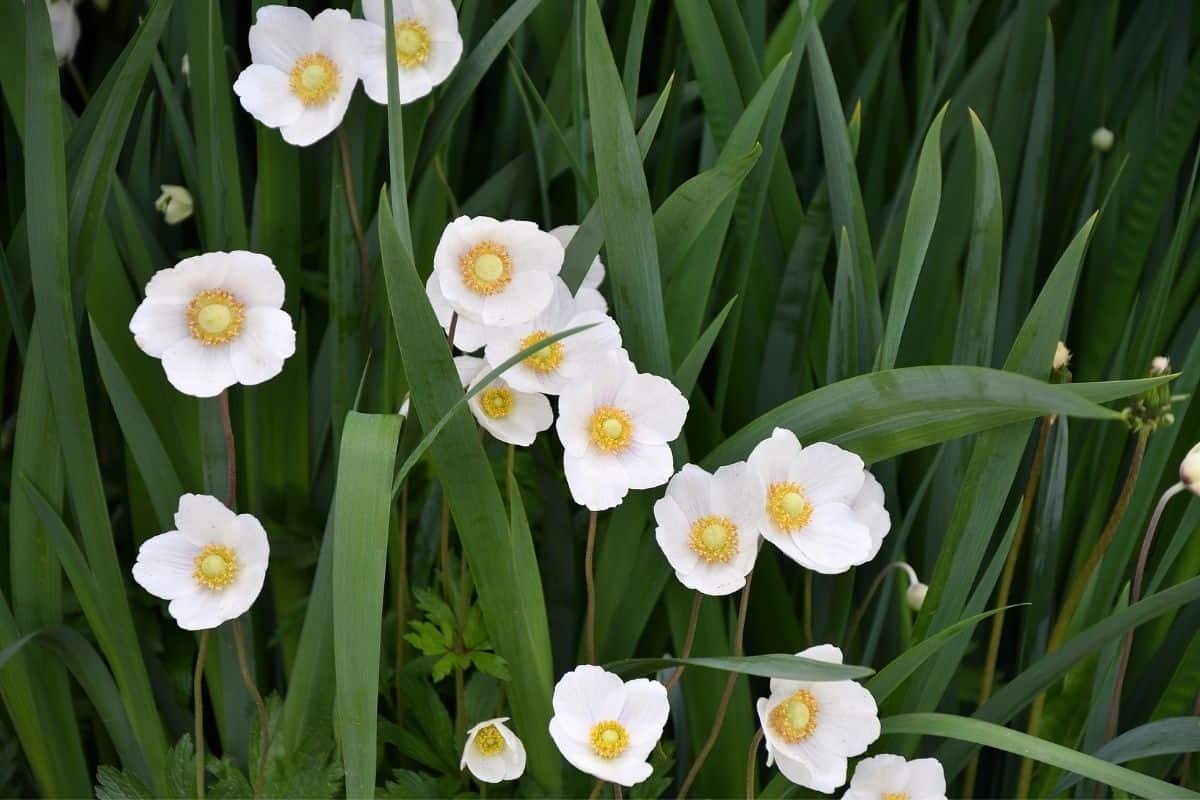
The small-flowered anemone is a short flowering plant that grows striking white flowers with yellow centers. On the underside, these flowers are tinged with blue.
Plant it in either full sun or partial sun. It will grow up to 10″ tall and 10″ wide. This plant blooms in the late spring and throughout the summer. It requires an average amount of water, so normal rainfall levels will likely be enough. The soil should be slightly moist but should have excellent drainage.
Small-flowered anemone grows well in rocky soil, so it’s perfect for rock gardens. There are no serious disease or pest issues for this plant.
3. Alpine aster (Aster alpinus)
Alpine aster is a low-growing flowering plant that blooms with bluish-purple flowers with yellow centers. It grows in clumps and can grow to be up to 1′ in height. The flowers are about 2″ across on thin stems, and they are set against the plant’s dark-green foliage.
Plant alpine aster in full sun or partial shade and in soil that is moderately fertile and drains well. This plant will tolerate rocky soils and sand as well as drought.
Many growers use it to add a pop of color to their landscaping in flowerbeds, borders, or rock gardens. Its dark-green foliage will look good throughout the growing season. You can expect butterflies to be attracted to this plant.
4. Giant marsh marigold (Caltha polypetala)
Giant marsh marigold is a striking plant that blooms with bright yellow flowers that are each 2″ across. This plant will reach a height of 1′ to 2′ tall and just as wide.
Unlike so many plants that will thrive in soil that drains well, this one needs the water to not drain well. Keeping the soil moist can be made easier by planting these next to a pond or stream. They can even be planted in water that is about 6″ deep.
Use plenty of mulch on top of the soil to help keep the moisture in. It needs full sunlight and soil that is highly fertile. Pests aren’t much of a problem for this plant, and it is deer resistant.
5. Yellow lady’s slipper orchid (Cypripedium parviflorum var. pubescens)
Yellow lady’s slipper orchid is an unusual-looking plant that grows unique flowers. The plant blooms with a deep yellow pouch that has red dots on it. Brown and green petals grow downward and over the pouch. Each of these petals grows in a twist.
This common type of wild orchid needs partial shade and fertile soil that drains well and is usually moist. This plant isn’t vulnerable to most diseases and pests, and it grows to be 1′ to 2′ tall.
It’s a good idea to mulch the soil once this orchid has been planted so that the soil retains more moisture. Plant it in a city garden, a container, or as a border.
6. Water horsetail (Equisetum fluviatile)
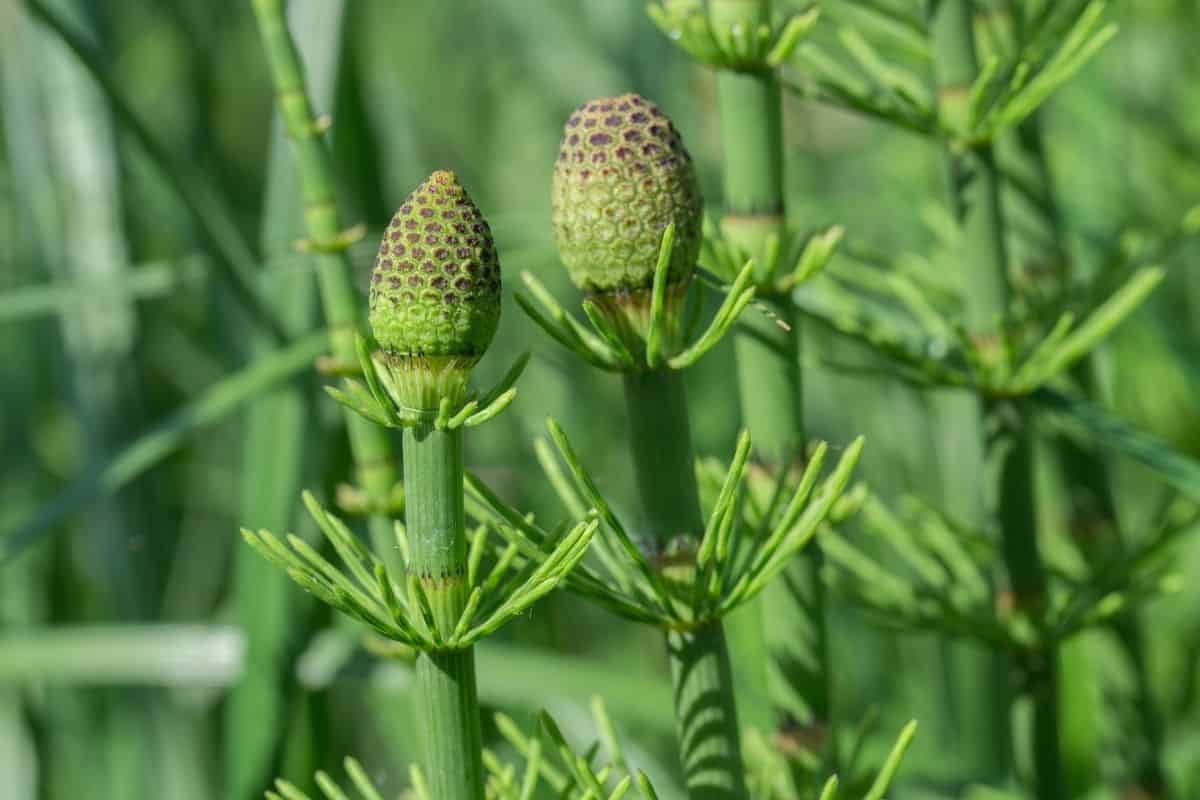
Water horsetail is an unusual plant that does not flower or produce seeds. This perennial grows thick stems that are hollow, smooth, and look like bamboo. They are a great addition to a water garden or pond.
If you have an area that nothing will grow in because of the moisture, water horsetail may be the answer. This plant grows to be between 2′ and 3′ tall.
Its rhizomes multiply quickly, making this plant a fast spreader. If you don’t want it to take over, the rhizomes can be divided and some discarded. Plant it in part shade or full sun in soil that is moist or fully wet. It’s resistant to deer and most pests and diseases.
7. Beach strawberry (Fragaria chiloensis)
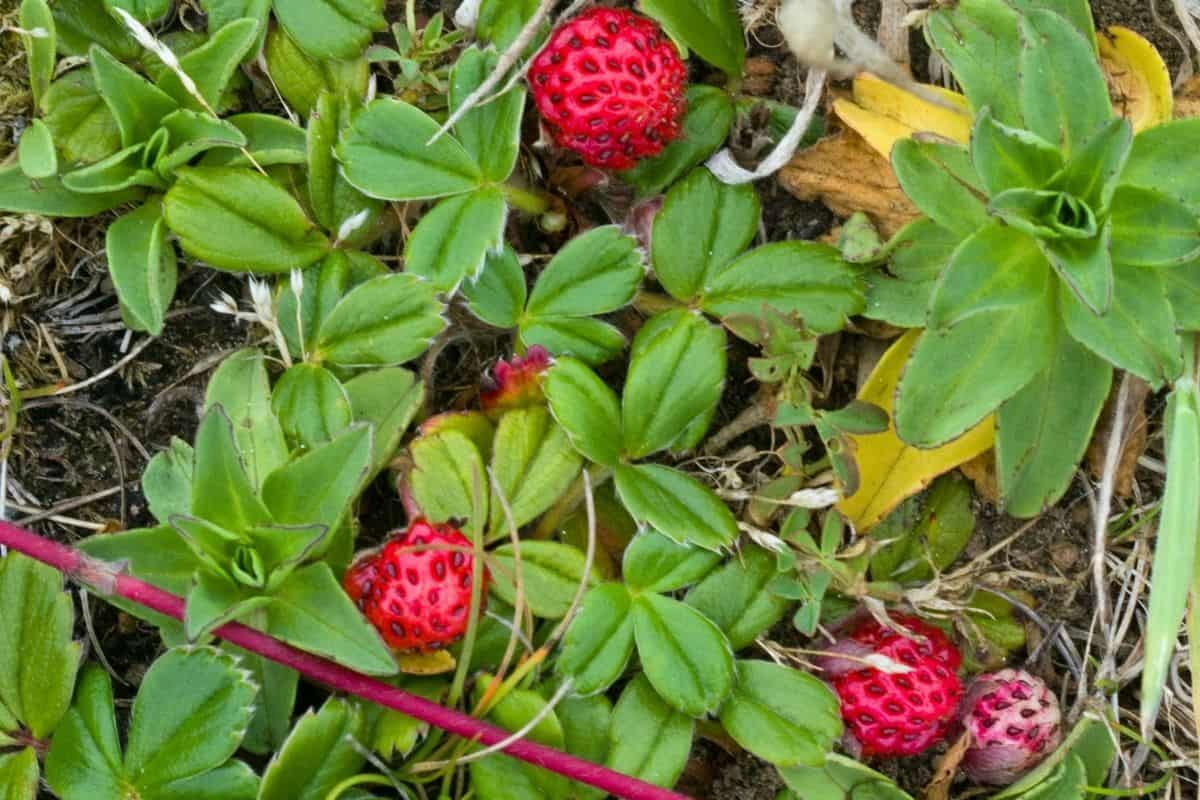
Beach strawberry, also called sand strawberry, is a low-growing strawberry plant that is perennial and evergreen. It has dark-green foliage that gets reddish during the winter.
Plant it in either partial shade or full sun and in soil that is well-draining. Beach strawberries will tolerate drought as well as a wide range of soils from clay to sandy. In the spring and the summer, it blooms with delicate white flowers with yellow centers. Those grow into edible berries in the summer that take on a bright red color.
Beach strawberry grows to be between 4″ and 6″ tall and grows runners that help it to spread quickly.
8. Foxtail barley (Hordeum jubatum)
Foxtail barley is an ornamental grass that has feathery spikes on top in a range of colors. They may be green, red, purple, or any combination of these, and they turn pale tan as they get older.
The tufted flower spikes bloom in the late spring through the middle of summer. Plant this showy grass in full sunlight and in soil that drains well.
Foxtail barley will grow in just about any soil from dry to average to moist and needs little to no care. It grows to be about 2′ tall and is great for ground cover and meadows, as it self-sows and spreads easily.
Alaska native plants FAQ
What edible plants are native to Alaska?
There are many native plants in Alaska, many of which are popular in other states as well. Here are just a few: dandelion, white clover, cattails, ferns, birch bark, Eskimo potatoes, and forget-me-not.
Where can I buy native plants in Alaska?
You can always check with your local nursery, but you can also check this Directory of Alaska Native Plant Sources.
Are there any native shrubs in Alaska?
There are many native shrubs in Alaska. Here are just a few: common snowball, weeping pea shrub, ninebark, Saskatoon berries, red currants, and more.
What is the Alaska state flower?
Alaska’s state flower is forget-me-not. If you’d like to know all the state flowers, we have a state flower list.
